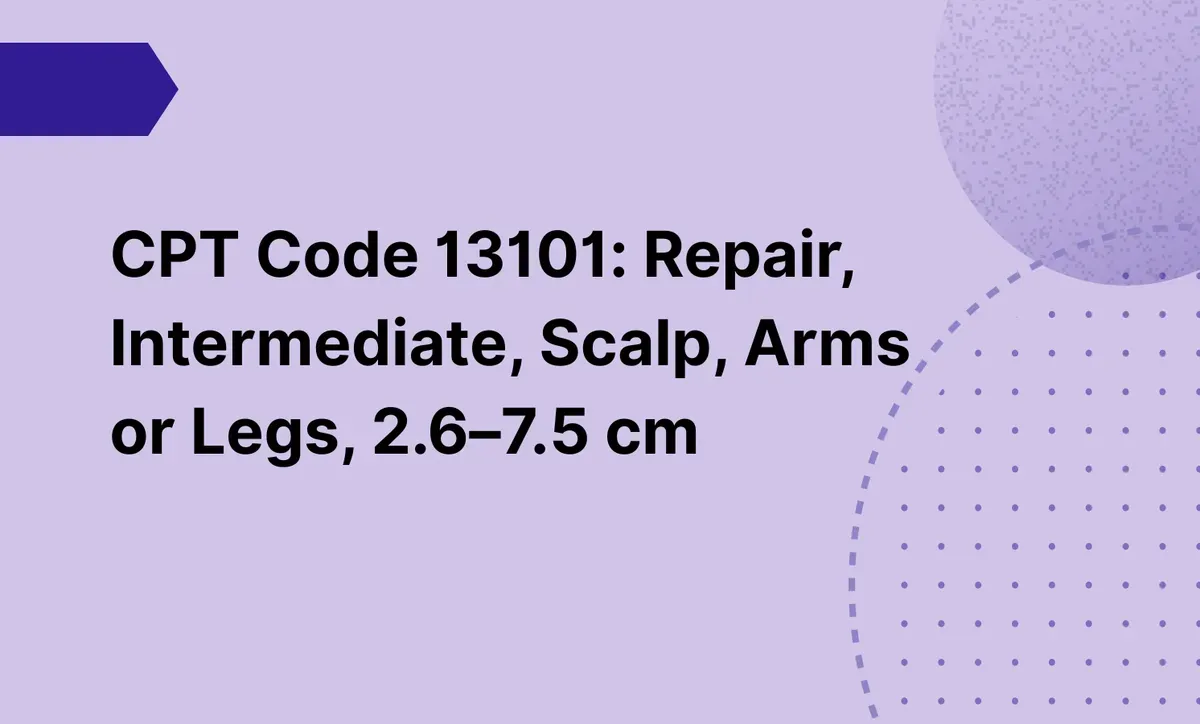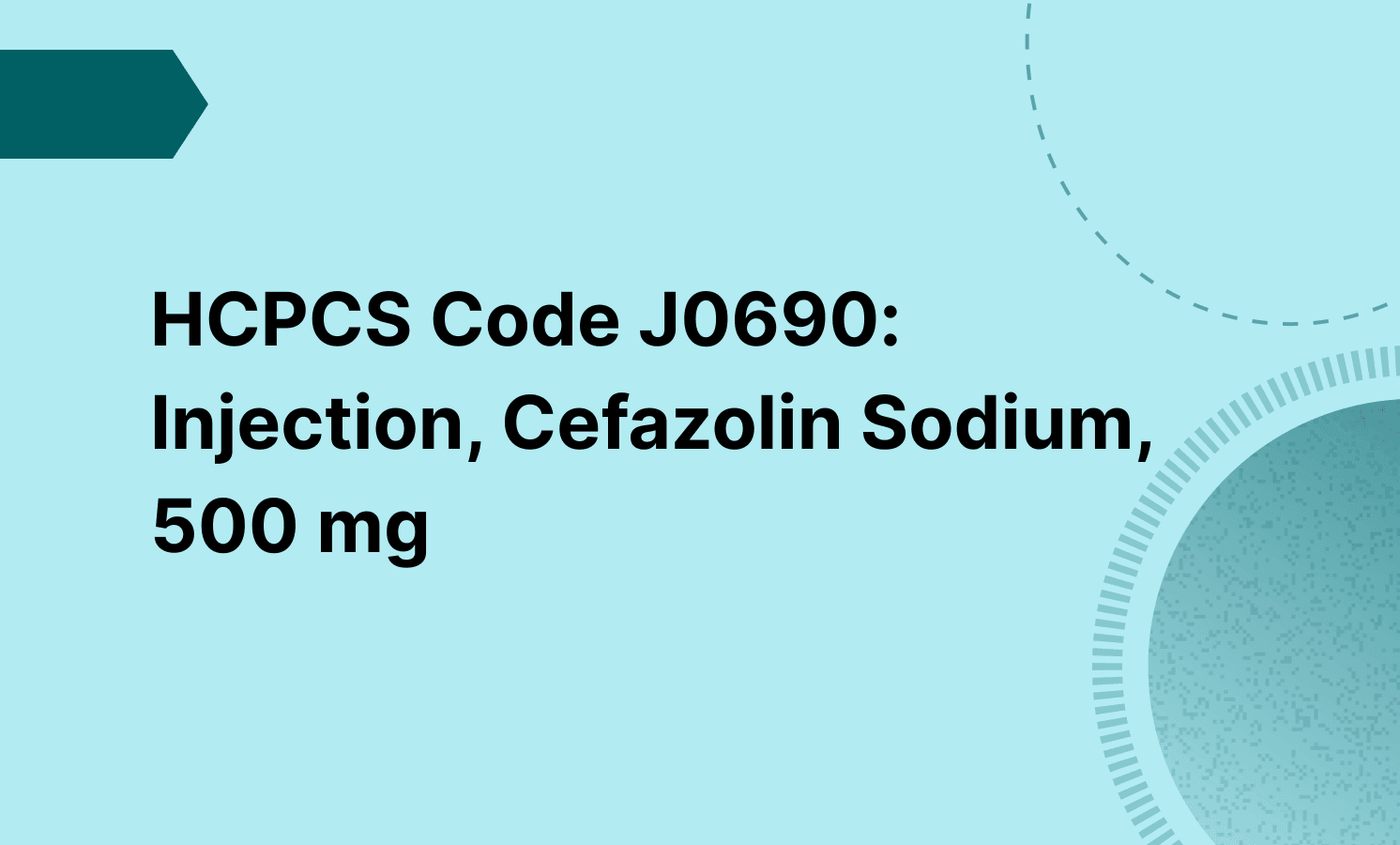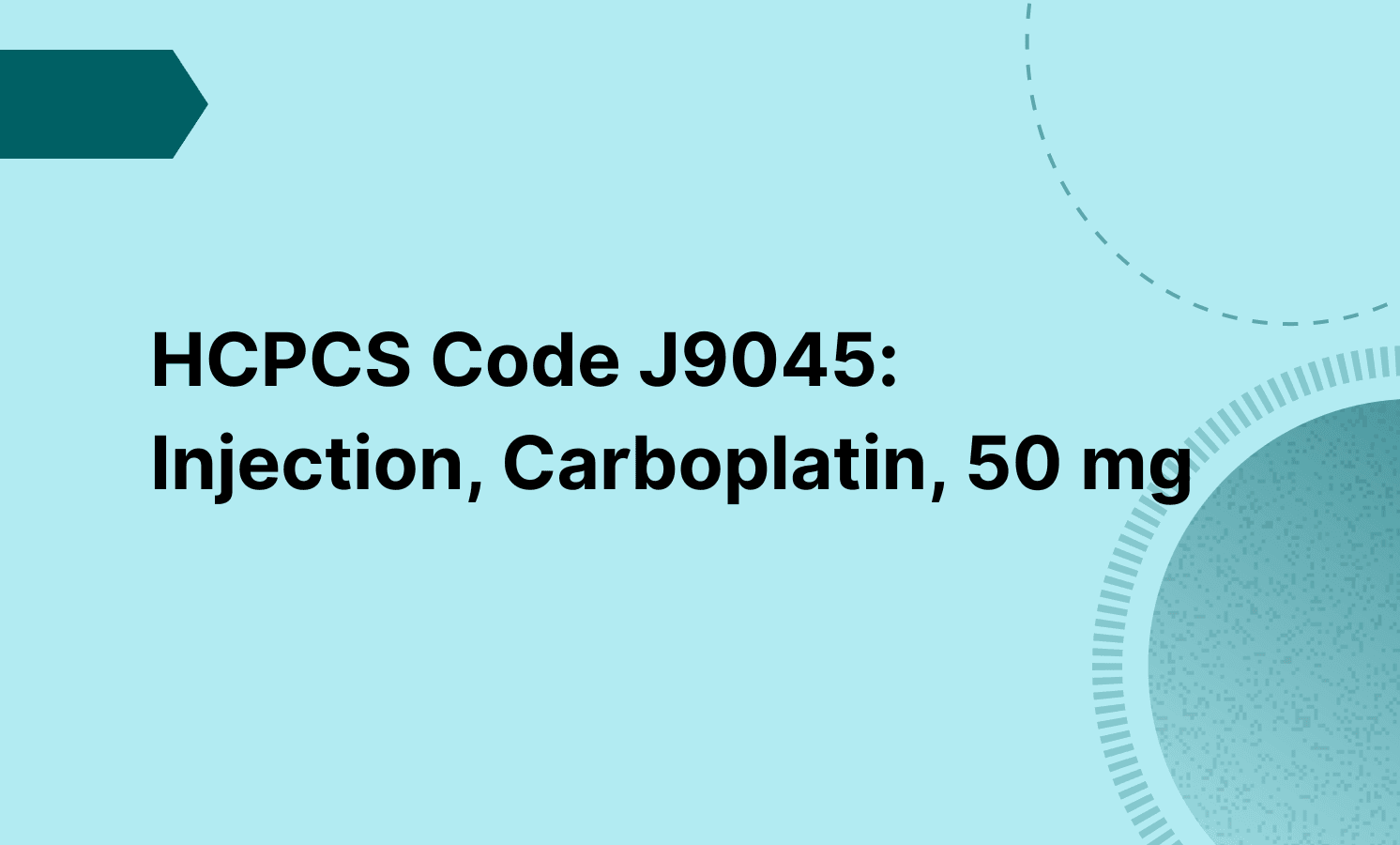An intermediate repair involves layered closure of the skin, subcutaneous tissue, and possibly the superficial fascia, usually after lesion removal or traumatic injury. It requires more effort than a simple closure, including extensive undermining if needed.

CPT Code 13101: Repair, Intermediate, Scalp, Arms or Legs, 2.6–7.5 cm
Learn how CPT code 13101 covers intermediate layered wound repair of 2.6–7.5 cm on the trunk or extremities, including subcutaneous tissue and fascia.
Use Code
Frequently asked questions
No. While more involved than simple repair, CPT code 13101 does not describe a complex repair. For repair of complex situations involving deep tissue, retention sutures, or flap coverage, use a complex closure code.
Yes, the 13101 CPT code can be used for scar revision when layered repair is performed and the wound is between 2.6 and 7.5 cm. Be sure to document the extent of closure and layers involved.
EHR and practice management software
Get started for free
*No credit card required
Free
$0/usd
Unlimited clients
Telehealth
1GB of storage
Client portal text
Automated billing and online payments






